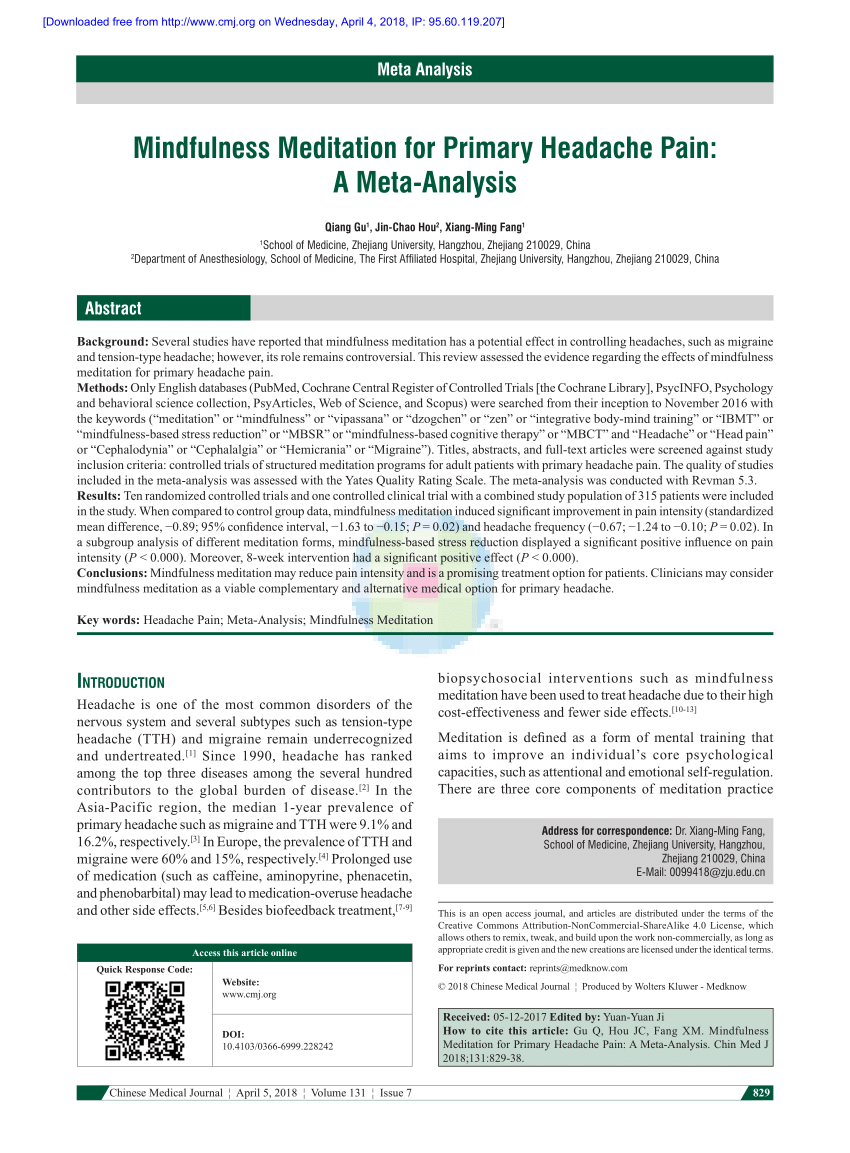
Average people do not have the time to meditate for longer than 20 minutes daily. You can increase productivity by setting a timer. You can do this by setting a 60 second alarm on your phone. This will remind you to stop thinking and focus on your breathing for that long. Many people find this method helpful, as it makes it easier to stay focused.
Wildflowers' study looked at the impact of a meditation app and cognitive training. The app allows users the ability to choose their top mediation goals and recommends meditative experiences that align with those goals. The app's homepage features animated animations that depict mountains, rippled waters, and birds/nature sounds. Although the goal-directed mediations are clear and easy to remember, they do not prove conclusive. You can make your mindfulness experience more enjoyable by switching to an app that tracks your daily activities.

Next, choose a time where you can concentrate on your breathing. Find a place that is quiet and allows you to concentrate. If possible, wear noise-canceling headphones to reduce distractions. Turn off your phone and make sure that you don't have to check your messages while you're practicing. Meditation can help you feel better and happier.
Apart from meditating daily, you might also try to bring your mindful attention everyday activities like cooking, cleaning, and exercise. You can bring your attention even to mundane tasks, such as cooking or cleaning up after the kids. It doesn't matter if you are at work or home. Bringing your attention to the present moment will help improve your ability and mood. This will allow you to be more productive and improve overall well-being.
As you practice, you should try to meditate for at least five minutes per day. It will help you stay focused and train your mind to be more alert. Meditating for at least ten to fifteen minutes daily is a good idea. Focusing for more than 15 minutes should not be a problem. Aim to spend at least 20 mins a day practicing meditation if your goal is to increase productivity.

For those with limited time, it is worth taking 15 minutes per day to meditate. It is possible to practice more advanced meditation, but it is best to start small and gradually increase your time by adding 20 minutes per day. A 10-minute session can help you relax and reduce stress. But if you're just starting, try to increase your minutes gradually. Continue to increase your minutes. This will allow for you to feel more relaxed, happy, and fulfilled over the long-term.
FAQ
How can I live my best life everyday?
Find out what makes YOU happy. This is the first step in living a life that you love. Once you are clear about what makes you happy and satisfied, you can move on to the next step. You can also inquire about the lives of others.
You can also read books like "How to Live Your Best Life" by Dr. Wayne Dyer. He discusses finding happiness and fulfillment throughout our lives.
How do I get enough vitamins?
Most of your daily vitamin requirements can be met by diet alone. Supplements can be helpful if you are lacking in any one vitamin. Multivitamin supplements can be taken that contain all the vitamins you need. You can also buy individual vitamins at your local pharmacy.
Talk to your doctor if you have concerns about your nutritional intake. Dark green leafy vegetables like spinach, broccoli and kale, as well as turnip greens and mustard greens such as turnip and mustard greens and bok choy, are rich in vitamins K & E.
If you are not sure how much vitamin you should be consuming, ask your doctor. Your medical history and current health will help you determine the best dosage.
Why does our weight change as we get older?
How can you find out if your weight has changed?
If there are less calories than muscle mass, then weight loss is possible. This means that the amount of calories consumed must exceed the amount of energy used daily. Activity levels are the most common reason for weight loss. Other factors include stress, illness and pregnancy. If there is more body fat than muscle mass, then weight gain can occur. It occurs when people consume more calories each day than they use. The most common causes are overeating, increased activity, hormonal changes, and excessive calories.
The primary reason we lose weight is that we consume less calories than what we burn. Regular exercise increases metabolism, which means that we burn more calories per day. This does not necessarily mean that we will get thinner. What is more important is whether or not our body is losing or gaining weight. If we're burning more calories that we consume, we'll lose weight. But if we're consuming more calories than we're burning, then we're actually storing them as fat.
As we get older, our movement speed slows down and so we move less. We also tend have less food to eat than when our children were young. Also, we are more likely to gain weight. On the flip side, we tend to have more muscle mass so we look bigger than we really are.
It's not possible to measure how much weight your body has lost without weighing yourself every week. There are many ways to determine your weight. You can check your waist size, your hips, your thighs, your arms, etc. Some people prefer to use a bathroom scale while others prefer to measure with tape.
Track your progress by measuring your waistline and weighing yourself every week. You can also take photographs of yourself every few years to track how far your progress has been.
You can also check your height online to find out how many pounds you have. If you're tall at 5'10", and weigh 180lbs, your weight would be 180.
These are 5 ways you can live a healthy and happy life.
A healthy lifestyle means eating right, being active, getting enough sleep, managing your stress levels, and having fun. Healthy eating means avoiding sugary and processed foods. Exercise can help you burn calories and strengthen your muscles. Sleeping enough is good for memory and concentration. Managing stress reduces anxiety and depression. Fun is the key to keeping us healthy and happy.
What is the difference of a virus from a bacteria?
A virus, a microscopic organism, is incapable of reproducing outside its host cell. A bacterium (or single-celled organism) reproduces by splitting itself into two. Viruses are small, around 20 nanometers in size. Bacteria are much larger, at 1 micron.
Viruses spread easily through contact with infected bodily tissues, such as saliva and urine, semen, vaginal secretions or pus. Bacteria is usually spread directly from surfaces or objects contaminated with bacteria.
Viral infections can be transmitted through skin cuts, scrapes and bites. They can also enter the body through the mouth, nose, eyes and ears, vaginal, rectum or anus.
Bacteria can enter the body through wounds. They may also come into our bodies through food, water, air, soil, dust, or animals.
Both bacteria and viruses cause illness. Viruses can not multiply within the host. They only cause disease when they infect living tissue.
Bacteria can spread within the host and cause illness. They can invade other areas of the body. They can even invade other parts of the body, which is why antibiotics are necessary to eradicate them.
How to measure bodyfat?
A Body Fat Analyzer will give you the most accurate measurement of body fat. These devices can be used to measure body fat percentages in people who are trying to lose weight.
Statistics
- According to the Physical Activity Guidelines for Americans, we should strive for at least 150 minutes of moderate intensity activity each week (54Trusted Source Smoking, harmful use of drugs, and alcohol abuse can all seriously negatively affect your health. (healthline.com)
- Extra virgin olive oil may benefit heart health, as people who consume it have a lower risk for dying from heart attacks and strokes according to some evidence (57Trusted Source (healthline.com)
- In both adults and children, the intake of free sugars should be reduced to less than 10% of total energy intake. (who.int)
- The Dietary Guidelines for Americans recommend keeping added sugar intake below 10% of your daily calorie intake, while the World Health Organization recommends slashing added sugars to 5% or less of your daily calories for optimal health (59Trusted (healthline.com)
External Links
How To
What does "vitamin" actually mean?
Vitamins can be described as organic compounds found in food. Vitamins allow us to absorb nutrients from food. Vitamins cannot come from the body so food must provide them.
There are two types of vitamins: water soluble and fat soluble. Water-soluble vitamins dissolve in water easily. These include vitamin C (thiamine), Vitamin B1 (riboflavin), Vitamin B2 (riboflavin), Vitamin B3 (niacin), Vitamin B6 (pyridoxine), Vitamin C, B1 (thiamine), Vitamin B2 (riboflavin), Vitamin B3 (niacin), and Vitamin B6 (pyridoxine). Fat-soluble vitamins can be stored in the liver or in fatty tissue. Examples include vitamin D, E, K, A, and beta carotene.
Vitamins are classified according their biological activity. There are eight main groups of vitamins.
-
A - Essential for healthy growth and health maintenance.
-
C – essential for proper nerve function.
-
D - Essential for healthy teeth and bones.
-
E - needed for good vision and reproduction.
-
K - Essential for healthy muscles and nerves.
-
P - essential for strong bones, teeth and tendons
-
Q - Aids digestion and iron absorption
-
R - necessary for making red blood cells.
The recommended daily allowance for vitamins (RDA) varies based on gender, age, and physical conditions. RDA values are set by the U.S. Food and Drug Administration (FDA).
For adults over 19 years, the RDA is 400 mg per day for vitamin A. Because it is essential for the development of the fetus, pregnant women should consume 600 micrograms per daily. Children ages 1-8 require 900 micrograms per day. For infants younger than one year, 700 micrograms are required daily. However, this number drops to 500 micrograms each day for children aged 9-12 months.
Children ages 1-18years who are obese need 800 micrograms per day while those who are overweight need 1000 micrograms per day and children who are underweight need 1200 micrograms per day to meet their nutritional needs.
2200 mg of vitamin A per day is required for children aged 4-8 who have been diagnosed by anemia.
2000 micrograms is the minimum daily intake for adults over 50 years old to maintain good health. Mothers who are pregnant, nursing, or have a high nutrient need will require 3000 micrograms a day.
1500 micrograms is the recommended daily intake for adults aged 70+, who lose approximately 10% of muscle each year.
Women who are pregnant or nursing need more than the RDA. Pregnant women need 4000 micrograms per dayduring pregnancy and 2500 micrograms per day after delivery. Breastfeeding mothers require 5000 micrograms daily when breast milk production is occurring.